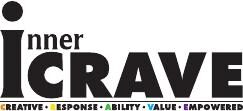
People always supply clues as to their intentions. Others, in turn, decode what people say based on these visual and auditory clues, as well as the actual words being spoken.
55 percent of the clues people give are visual, (mostly facial). 38 percent of the cues are transmitted via tone of voice. And the remaining 7 percent are verbal (the actual words used).
Show friendly signs
- Make eye contact
- Don’t overdo the eye contact
- Use you eyebrows.
- Use your eyes to show emotion. Widen your eyes for interest or passion.
- Keep you smile real
- Study great smiles.
- Look through your photos to find your own best smiles.
- Recall your smiling compliments.
- Combine your expressive eyes with you winning smile.
- Smile at anyone, anytime you feel it.
- Invest in a confident smile.
- When you greet others, lead with your smile.
- Hold your head up when you talk.
- Maintain good posture.
- Display openness.
- Don’t tap your feet while someone talks to you.
Make friendly sounds.
- Silence can be unfriendly.
- Record yourself speaking, then listen to the tape.
- Study people with friendly voices.
- Avoid raising your voice whenever possible.
- Don’t match tones with other people when they are unfriendly, upset or angry.
- Listen to yourself in conversation for tone violations.
- Add variety to your speaking voice.
- Speak in a confident tone.
Use friendly words.
- A person’s name is the friendliest word in the world to his or her ears.
- Examples of words that convey liking or a positive attitude toward someone include love, wonderful, excellent, magnificent, awesome, beautiful, perfect, inspiring, and appreciate.
- Words or phrases that display a sense of helpfulness include how can I help? What can I do? Gladly, with pleasure, absolutely, and sure.
- Generalizations, such as you always do and you never do, can also make you seem unfriendly. If you must make a valid criticism, do it without making it seem as though the other person in incapable of correcting it. Be specific.
Re-source: Re-enforce
Different ways to create and maintain a friendly mind-set.
- Like yourself.
- See yourself in others.
- Review you role model’s best features.
- Recast everyone you meet as the solution to today’s problems.
- Apply your fundamental beliefs.
- Play greeter for a day.
- Top you best service every week.
- Study the helpful.
- Every morning repeat your friendliness mantras as you prepare of or drive to work. “People are welcome in my world,””My friendliness is how I make a difference.”
- Protect your friendly mindset.
craving and resource from “The Likeability factor” by Tim Sanders
